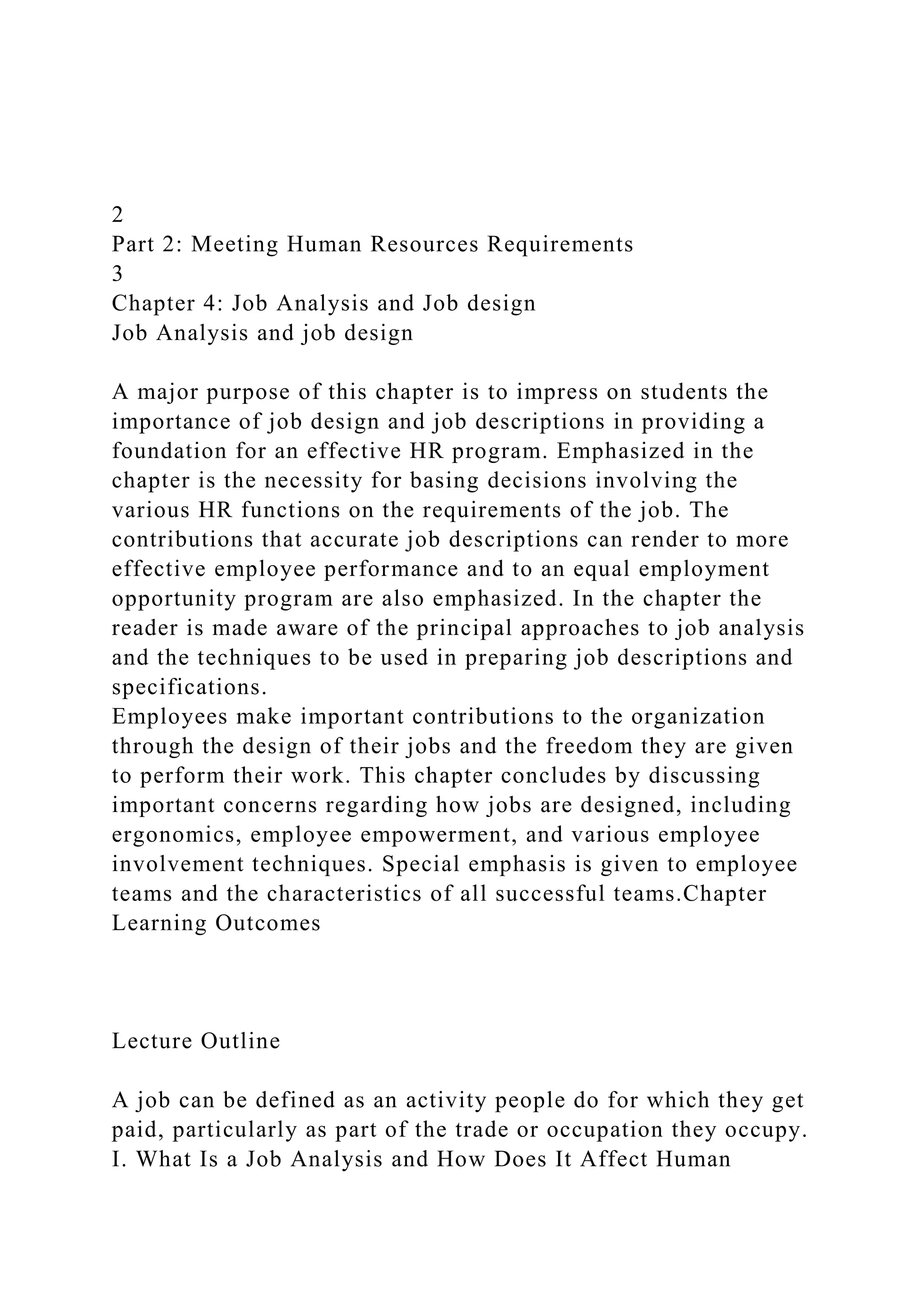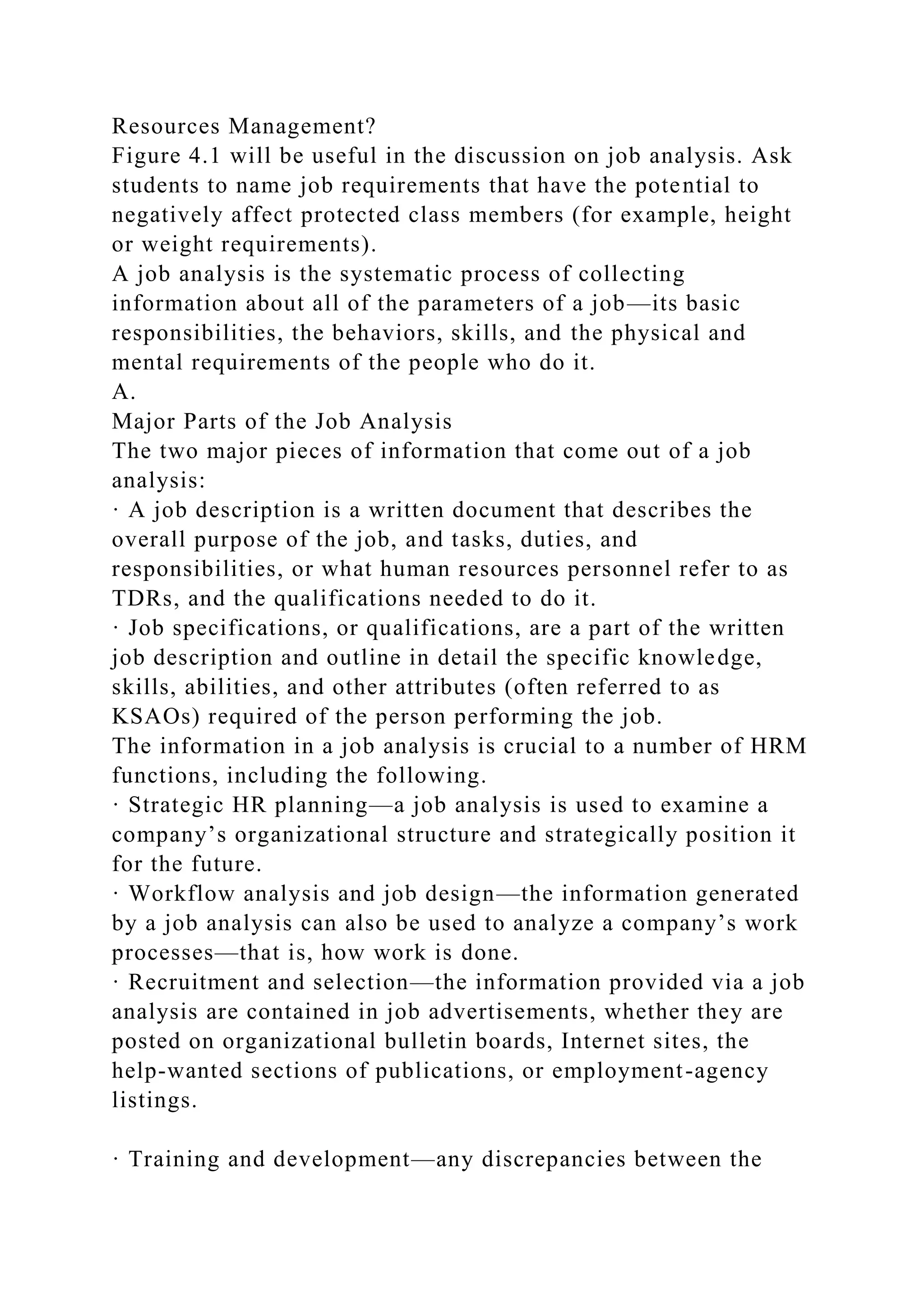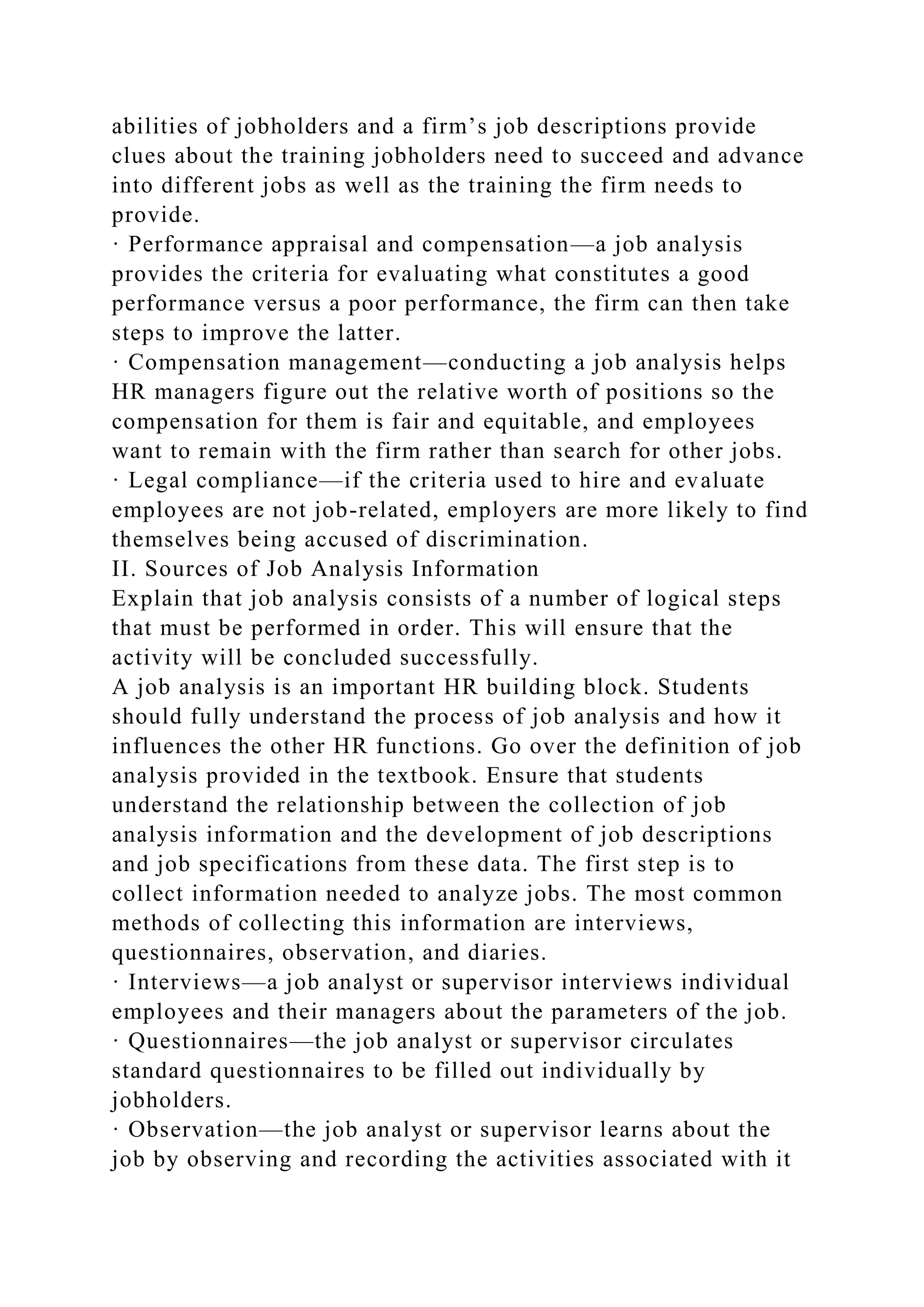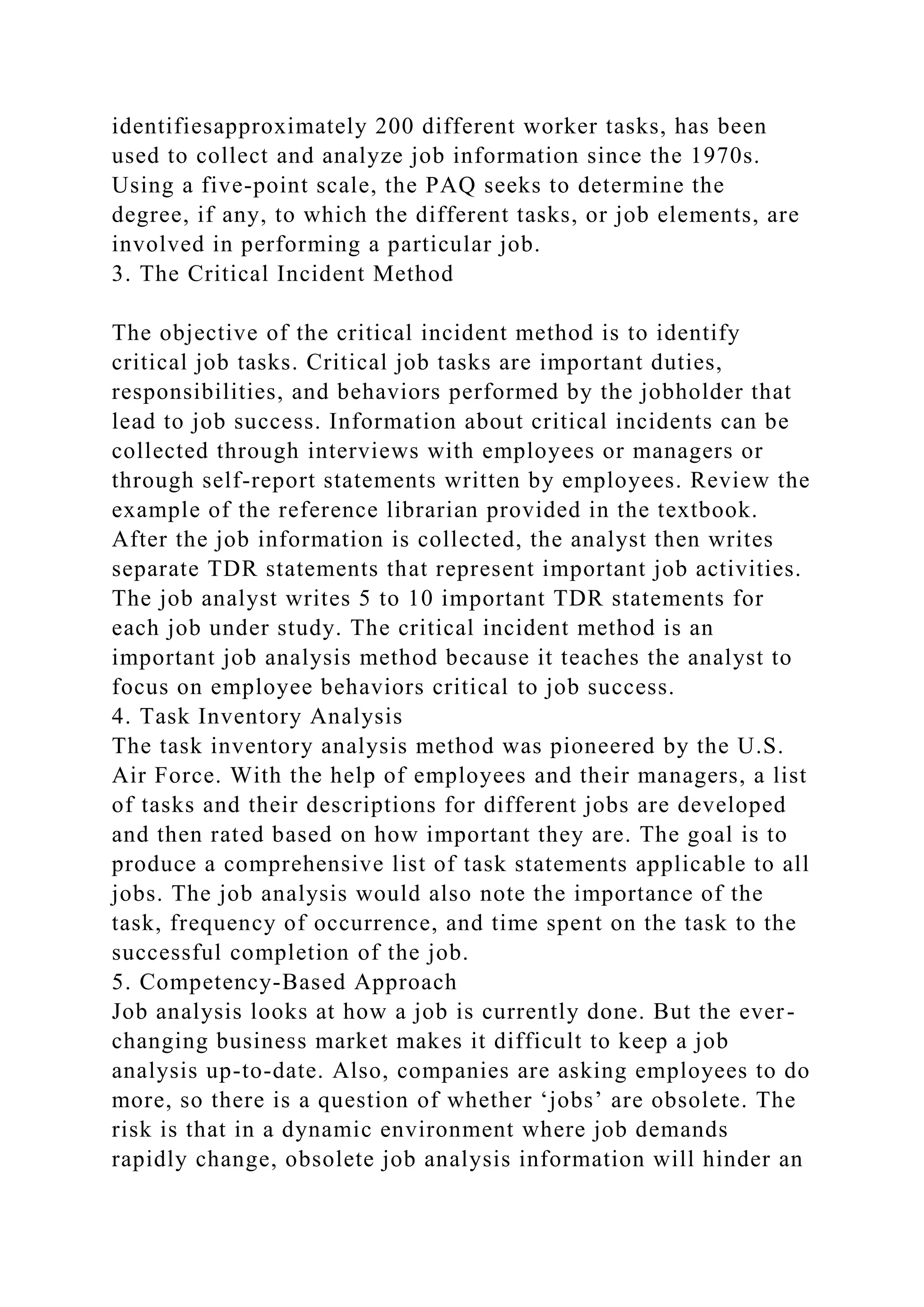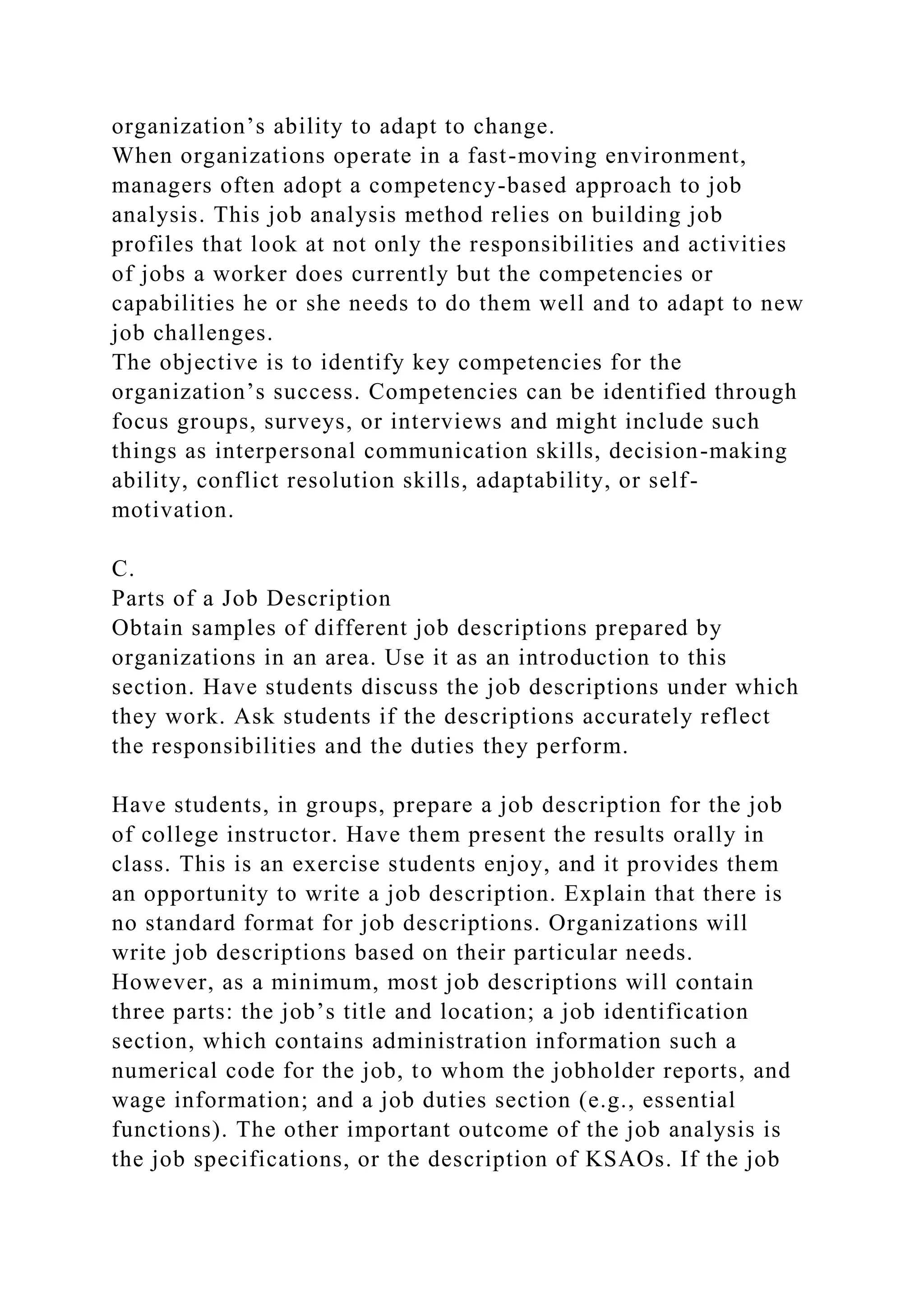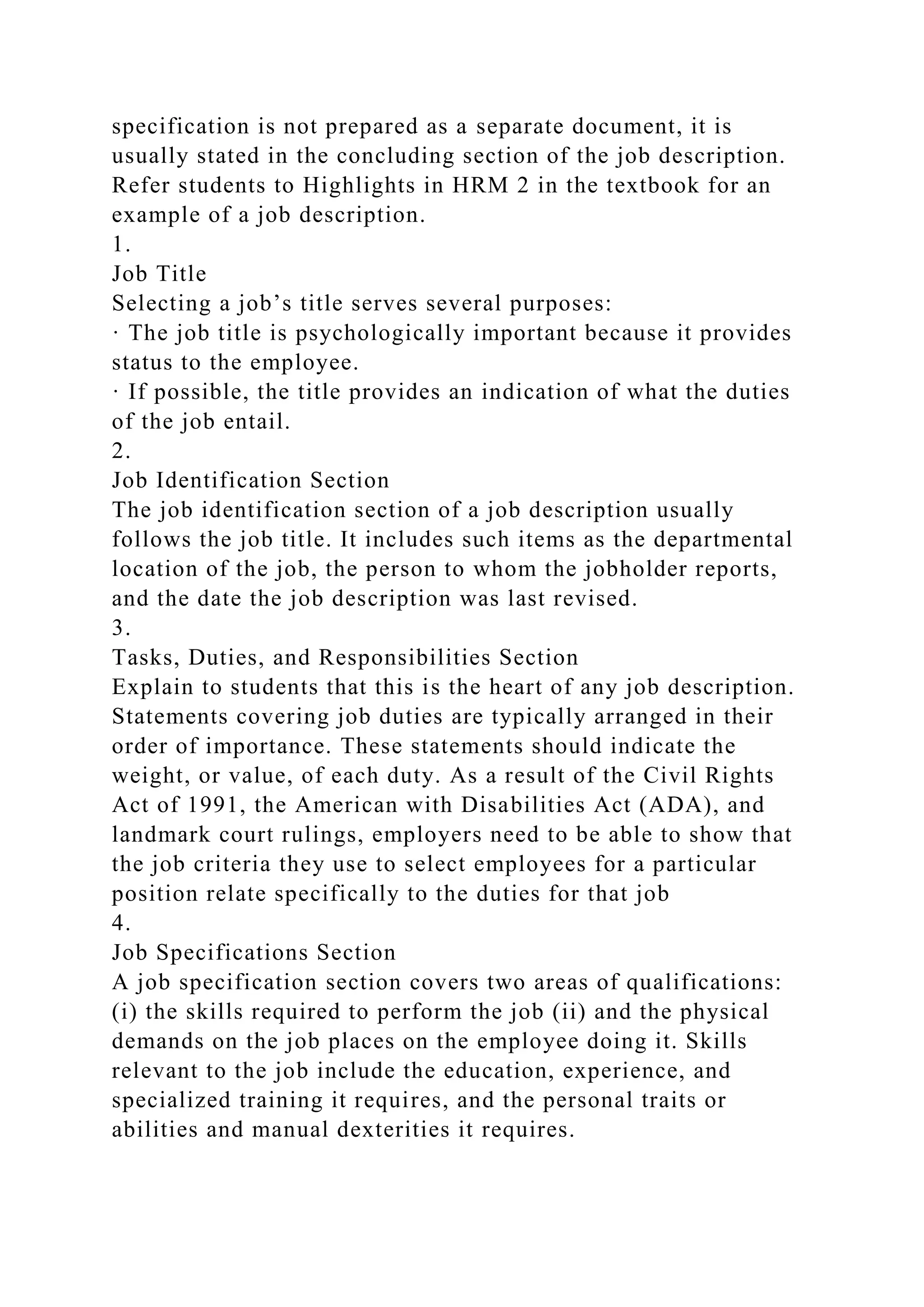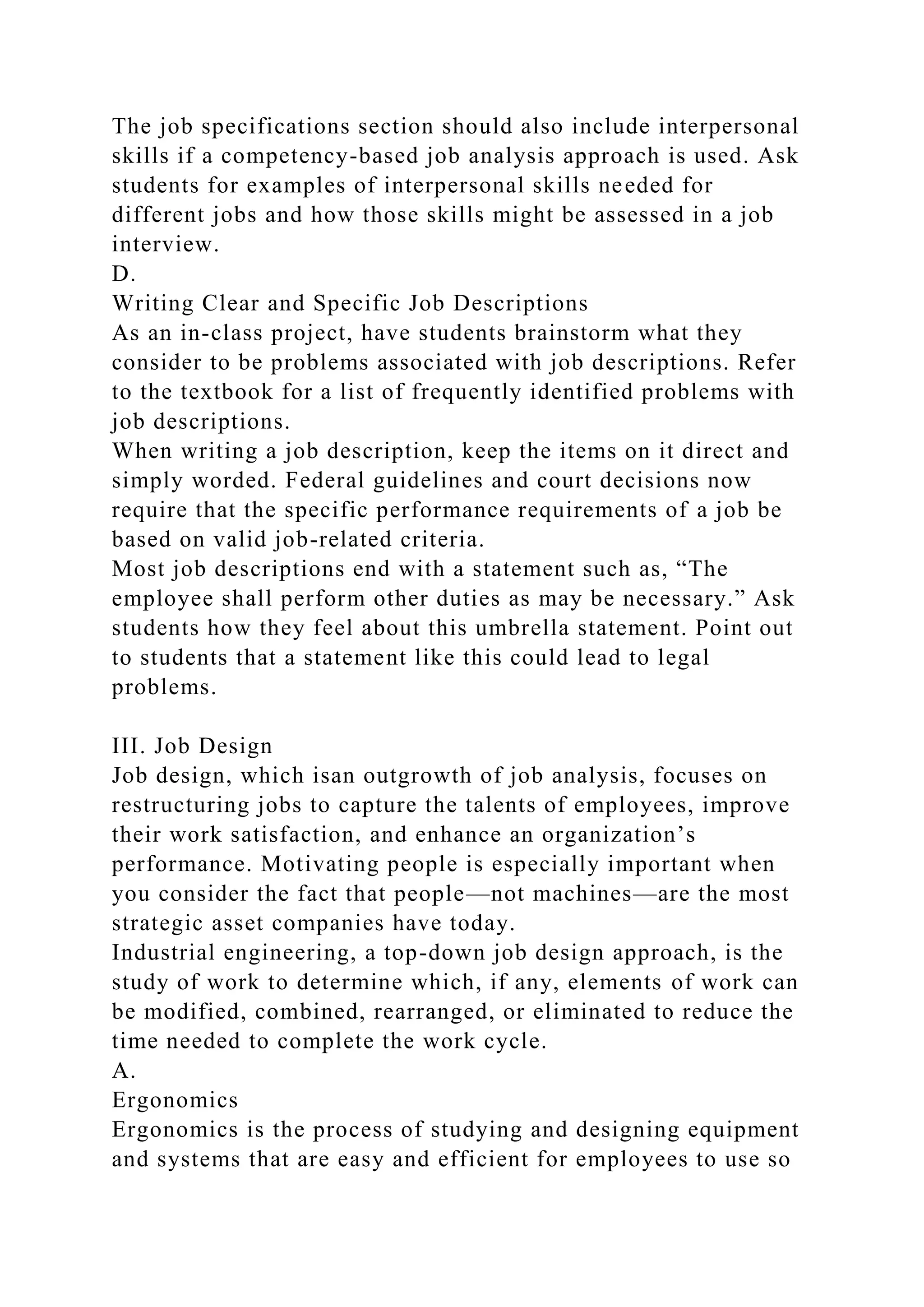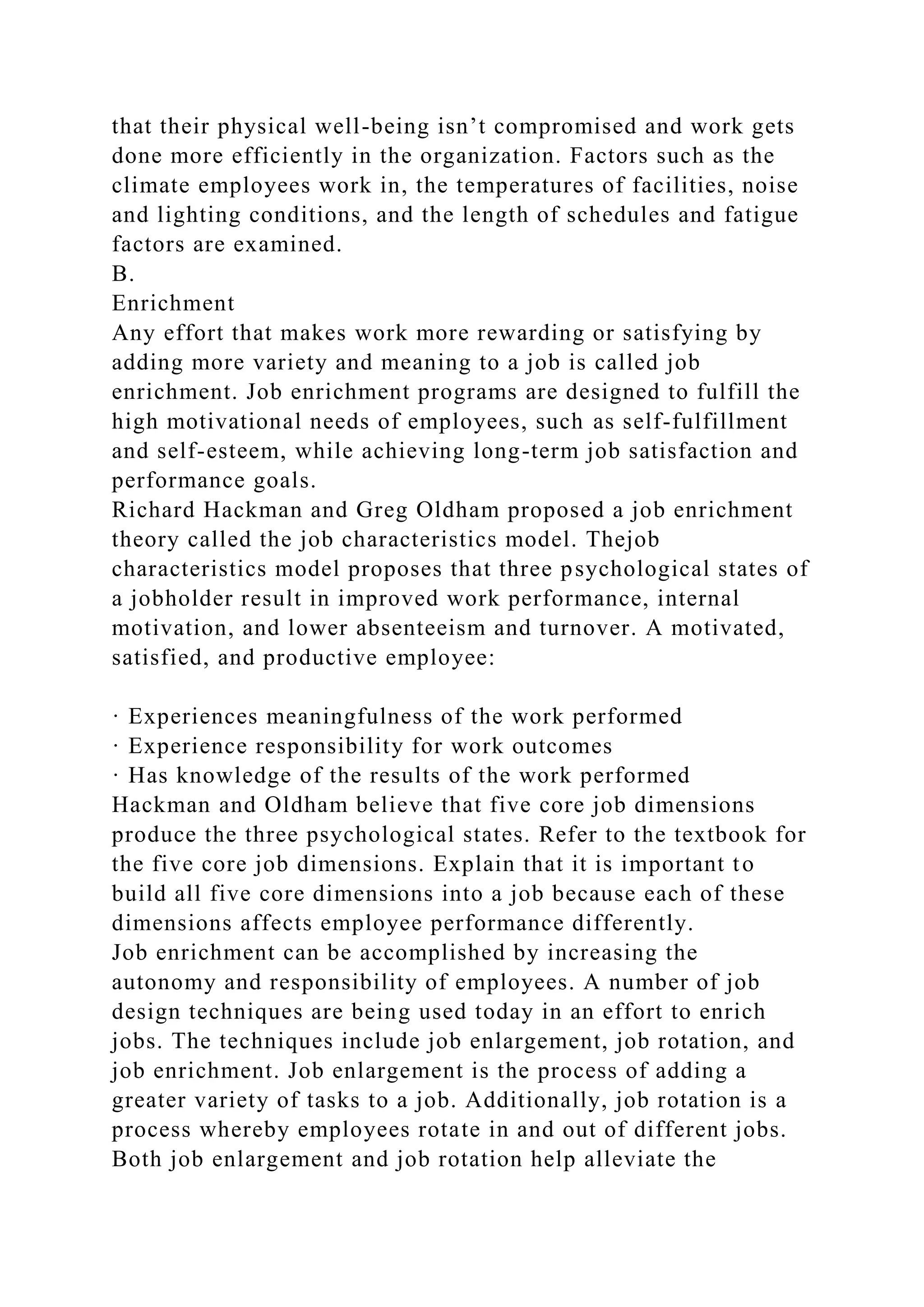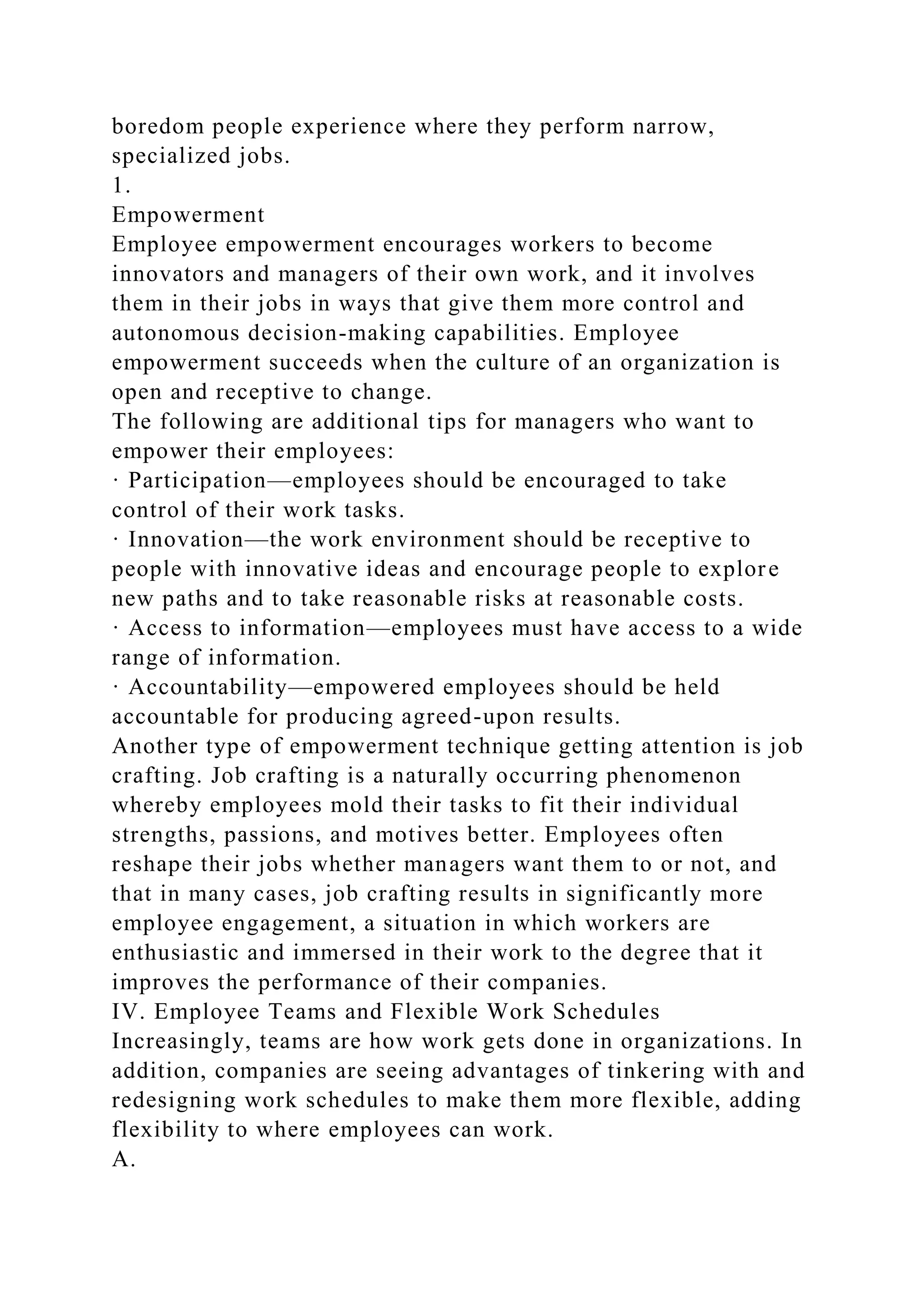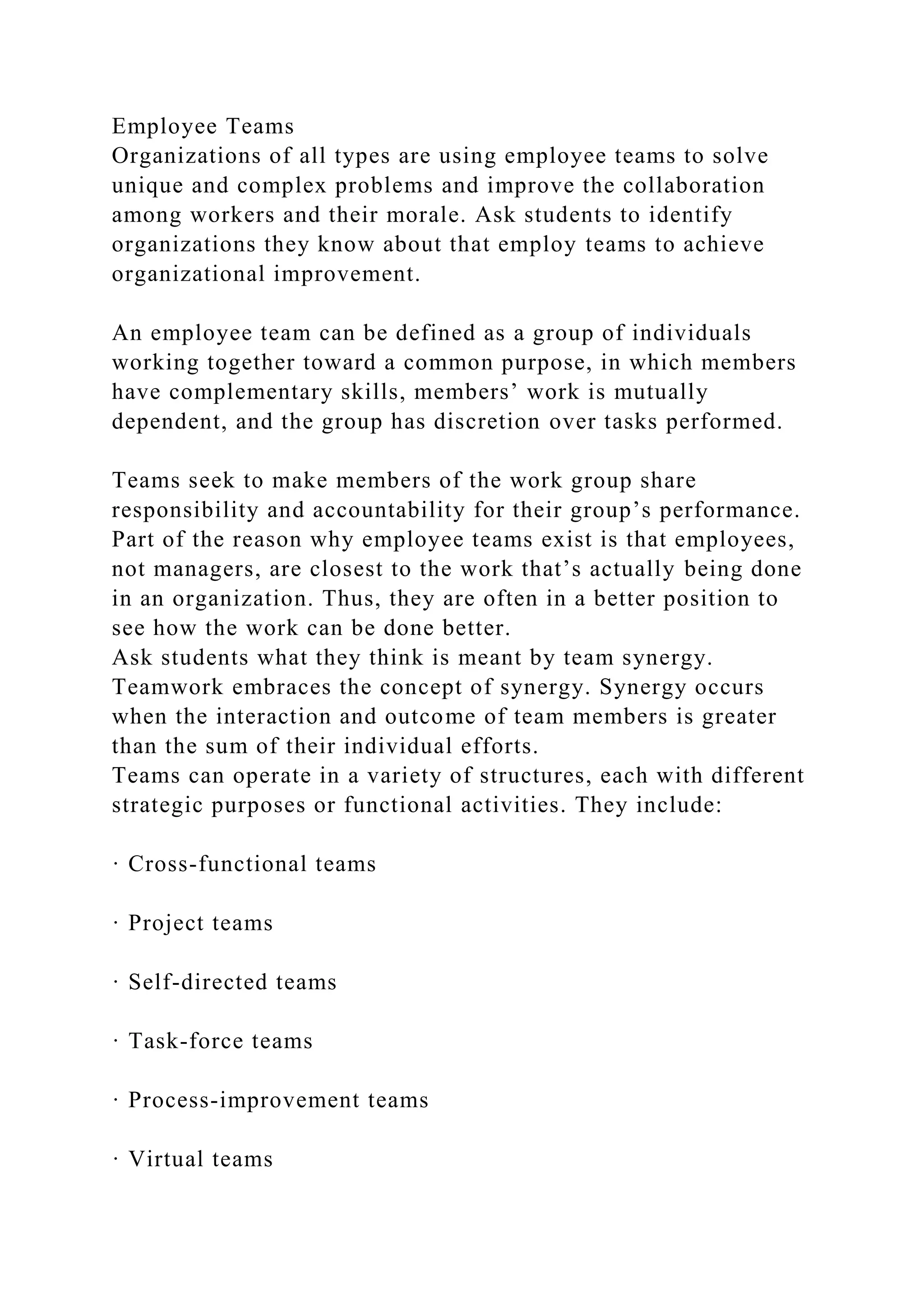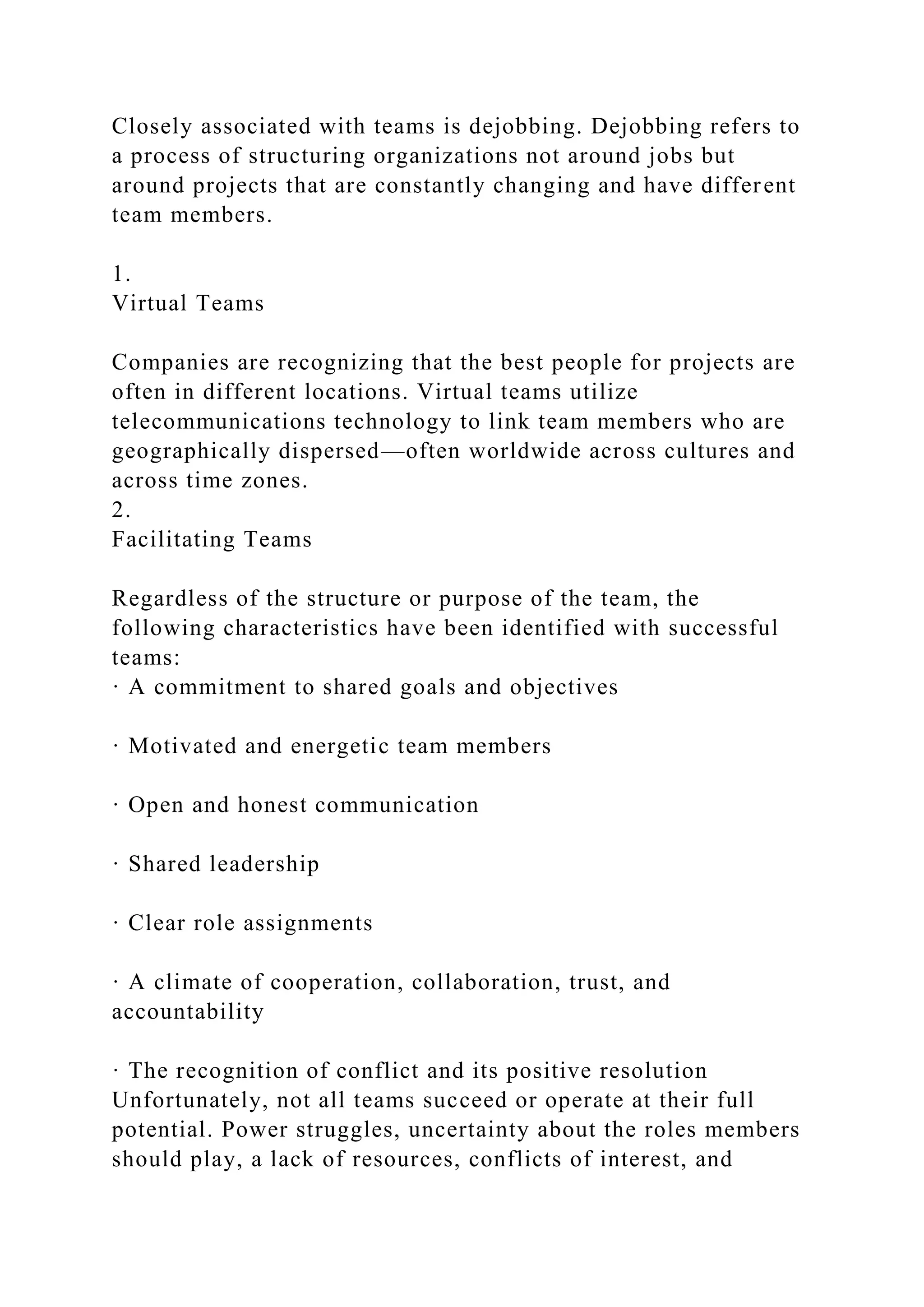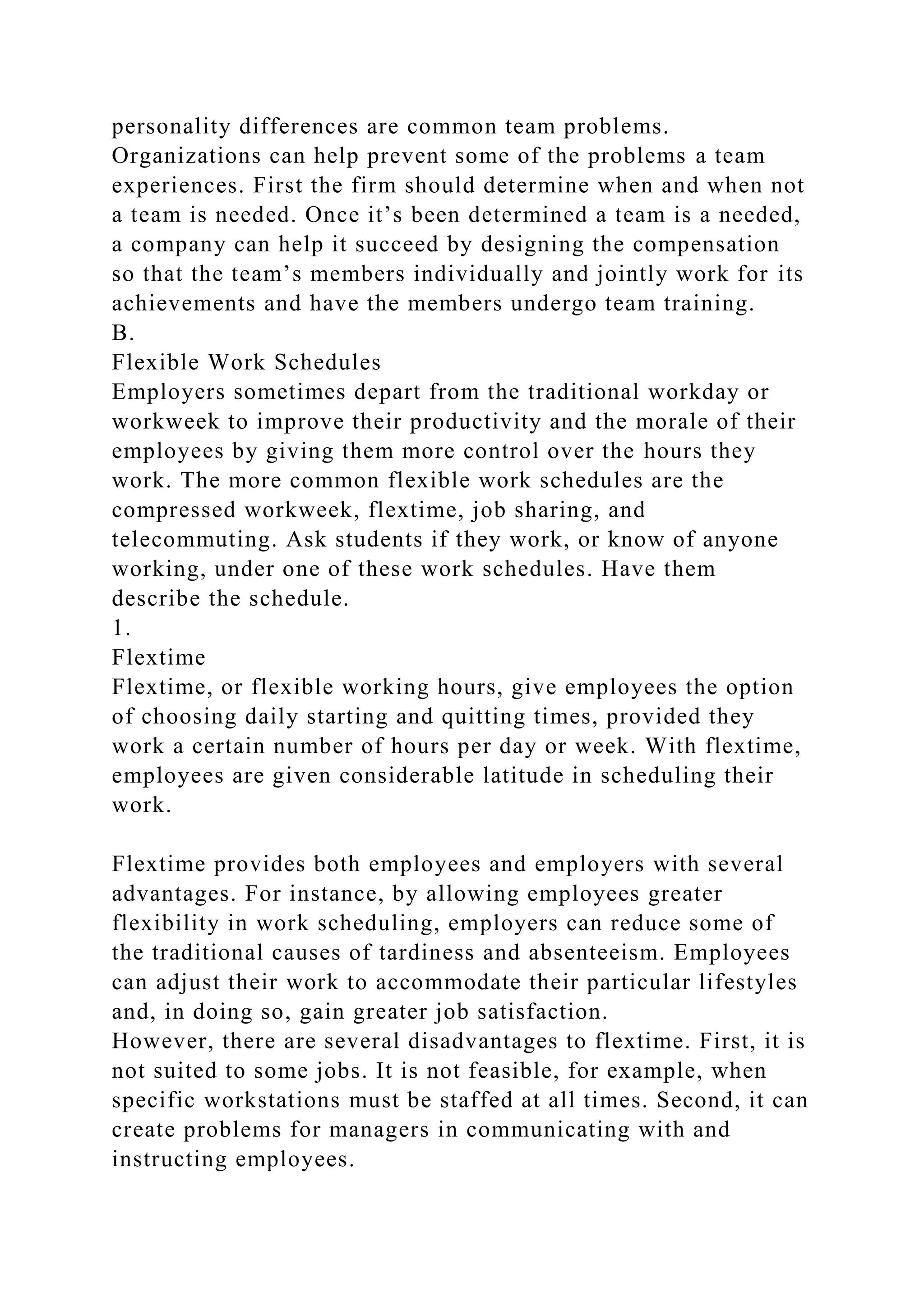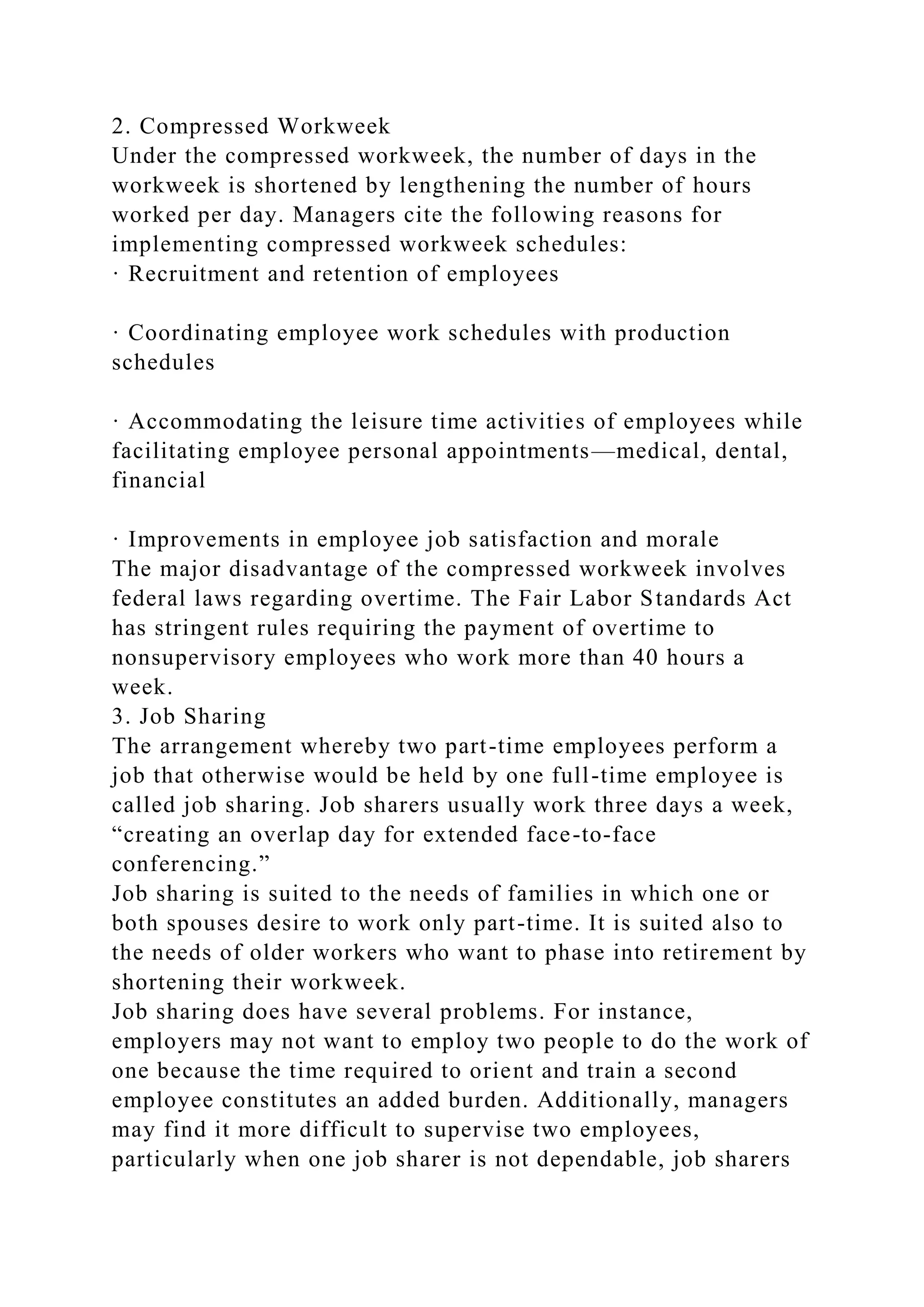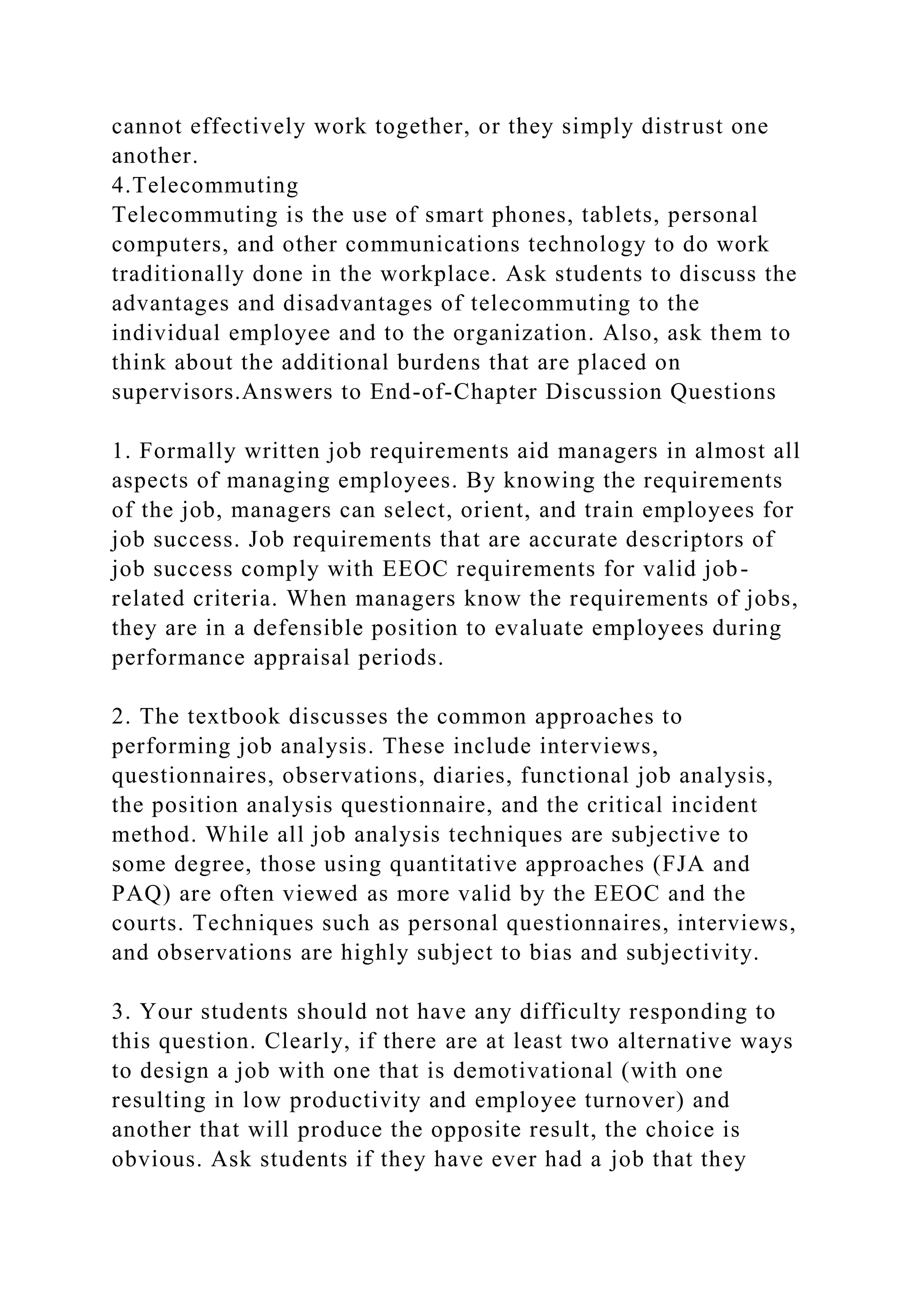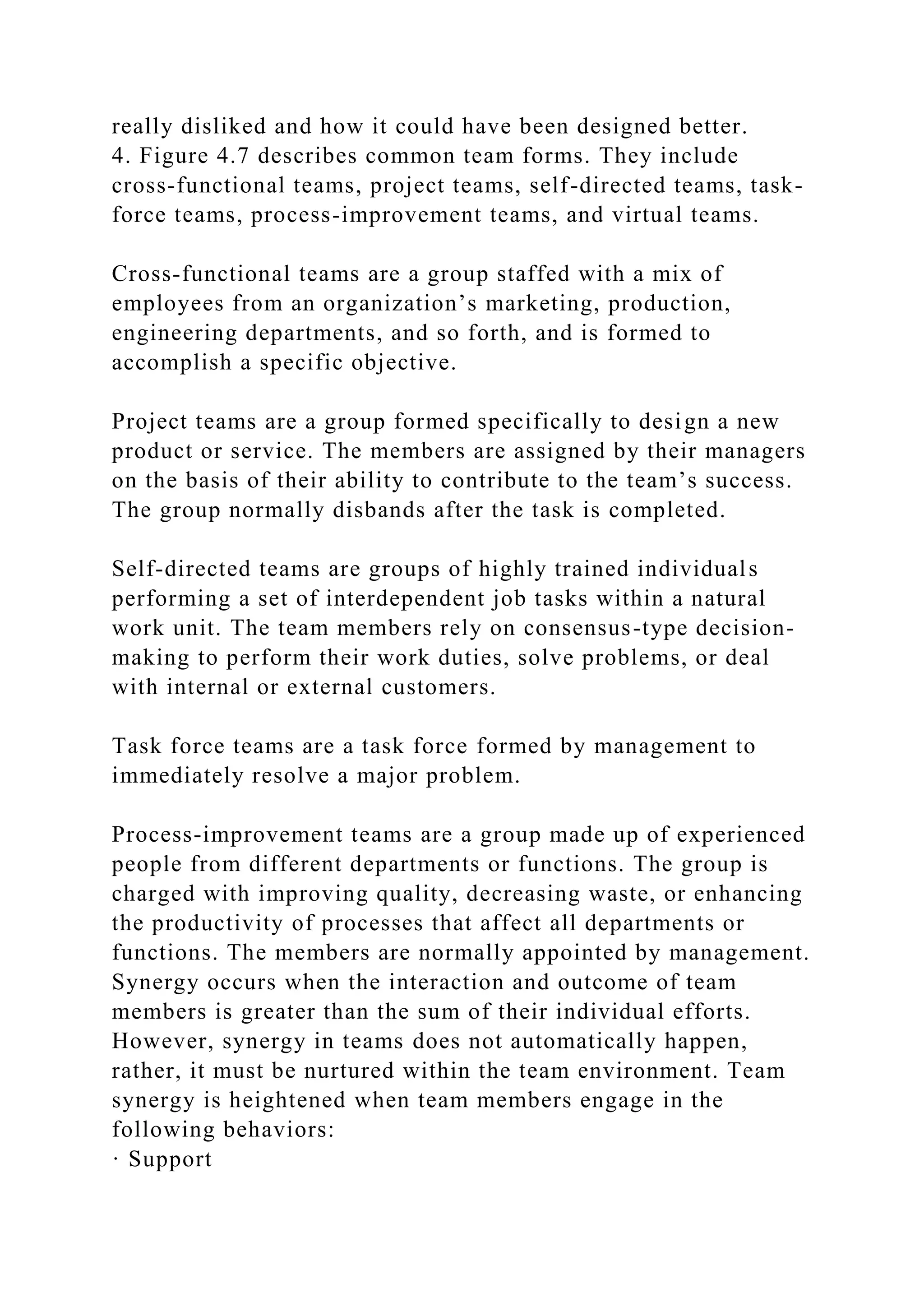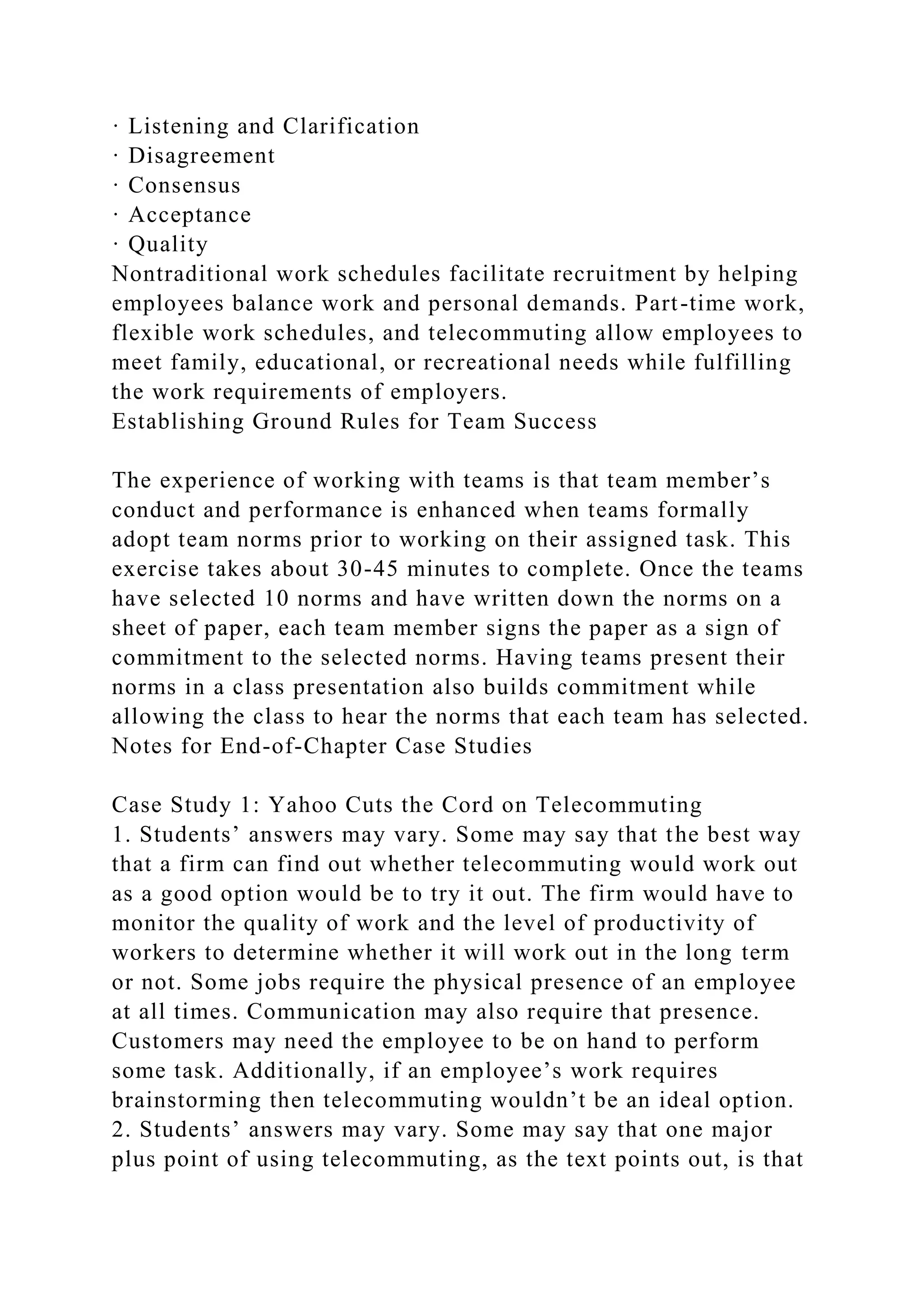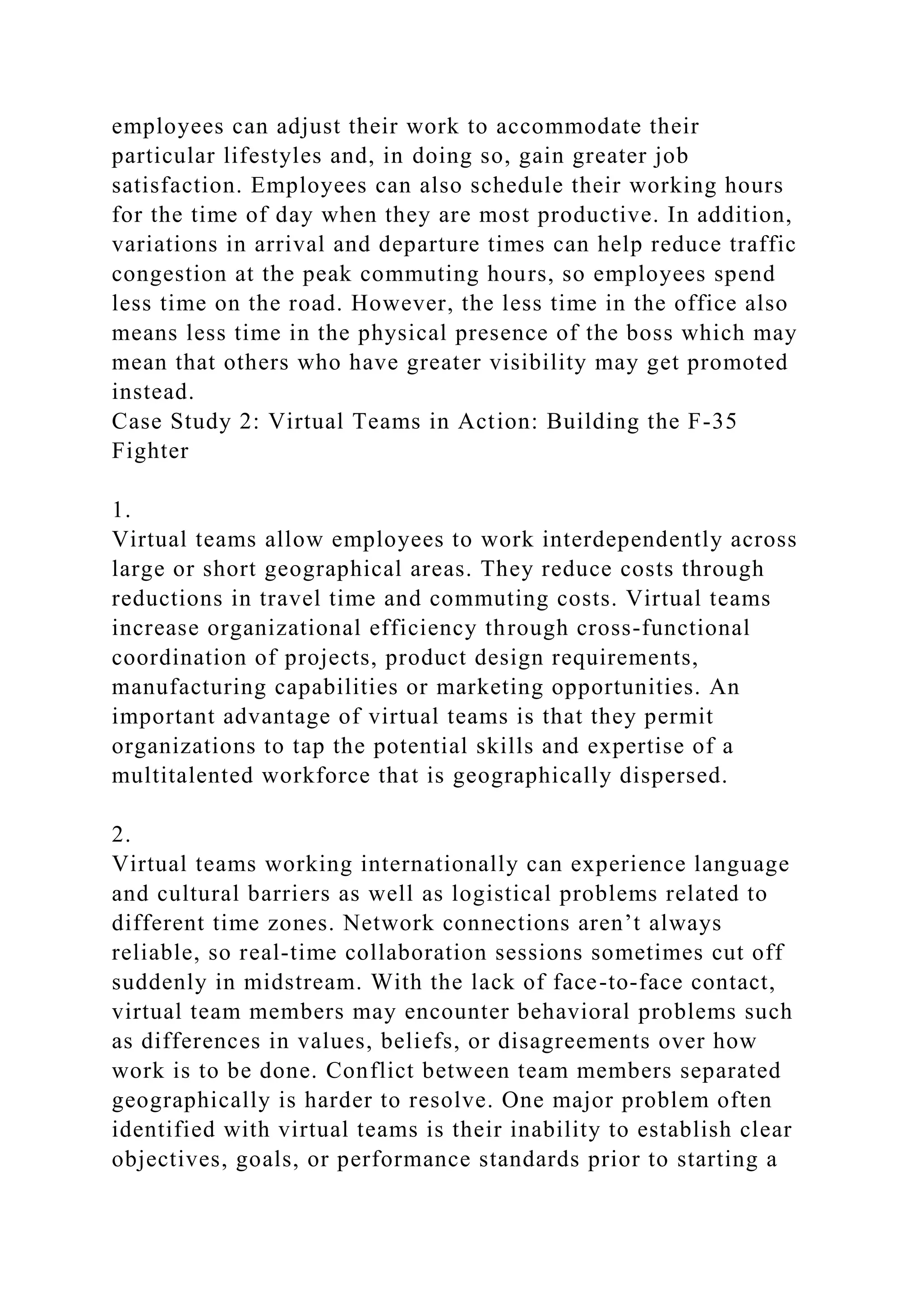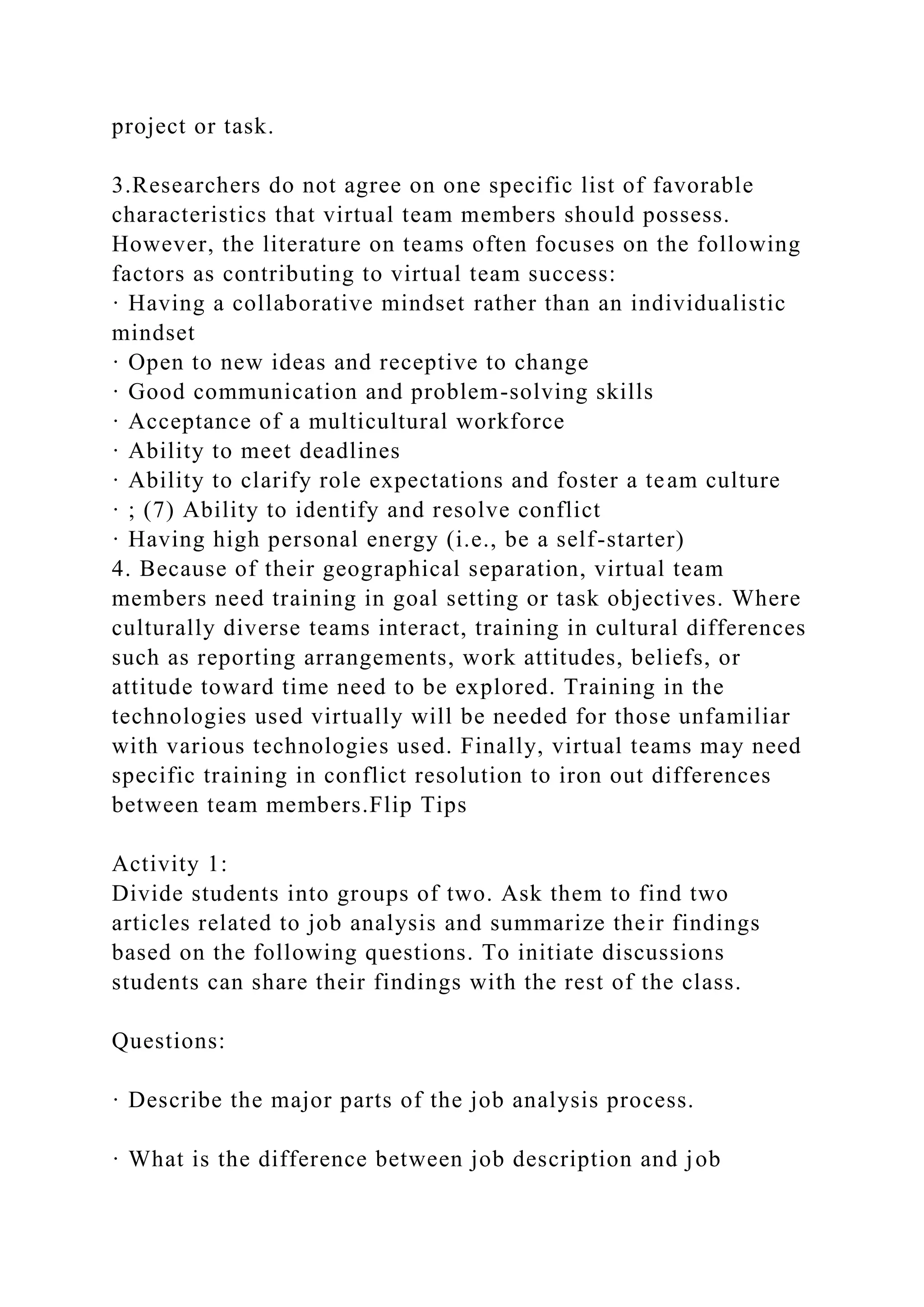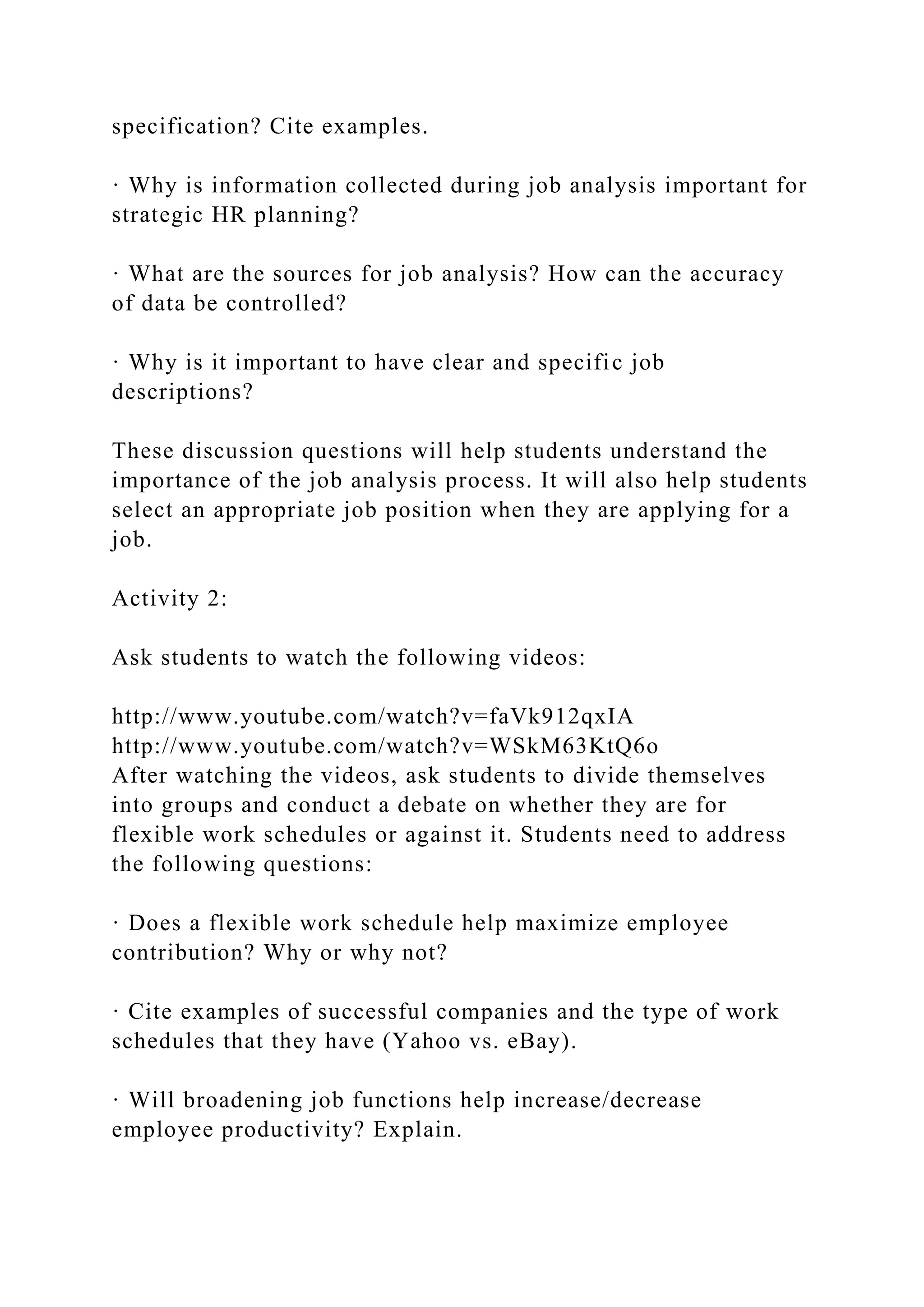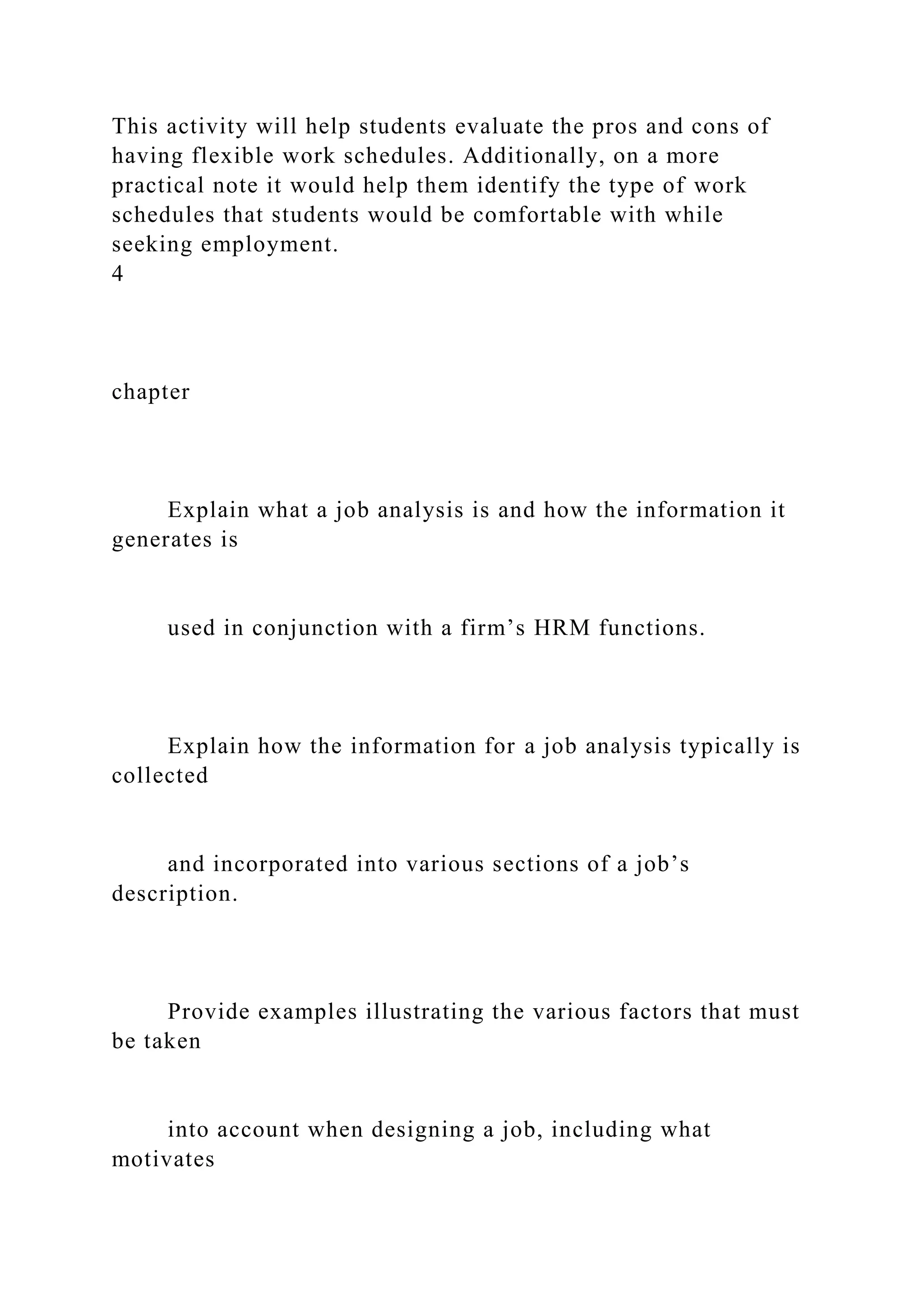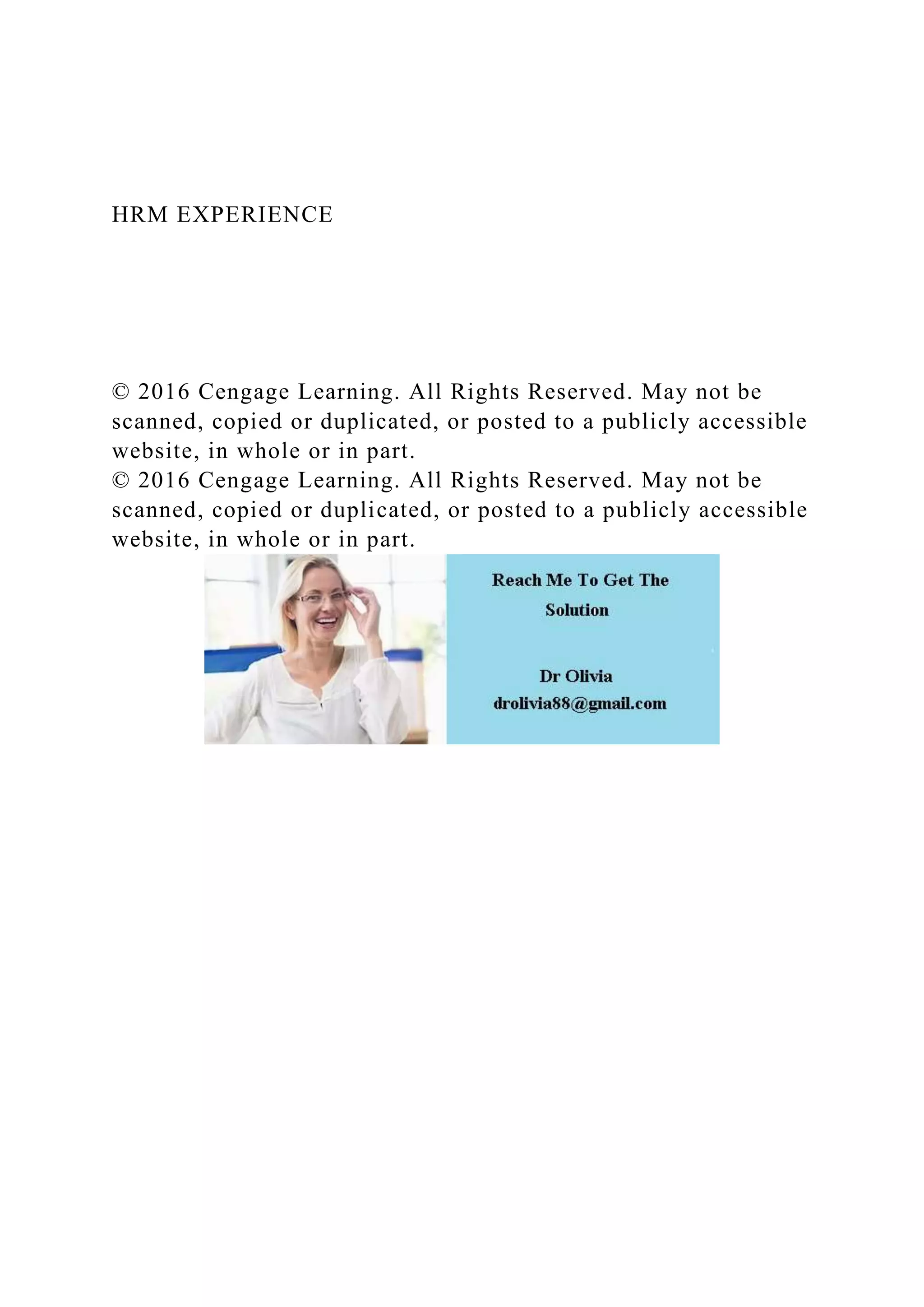This document discusses job analysis and job design. It begins by explaining that job analysis is the process of collecting information about the tasks, duties, responsibilities, and requirements of a job. This information forms the basis for accurate job descriptions and specifications. Accurate job descriptions are important for effective HR functions like recruitment, performance management, and legal compliance. The document then discusses different methods for conducting job analysis, such as interviews, questionnaires, observation, and diaries. It also covers developing job descriptions and specifications. Finally, the document discusses job design and how job characteristics can be modified to improve employee motivation, satisfaction, and performance through techniques like job enrichment, empowerment, and use of employee teams.
